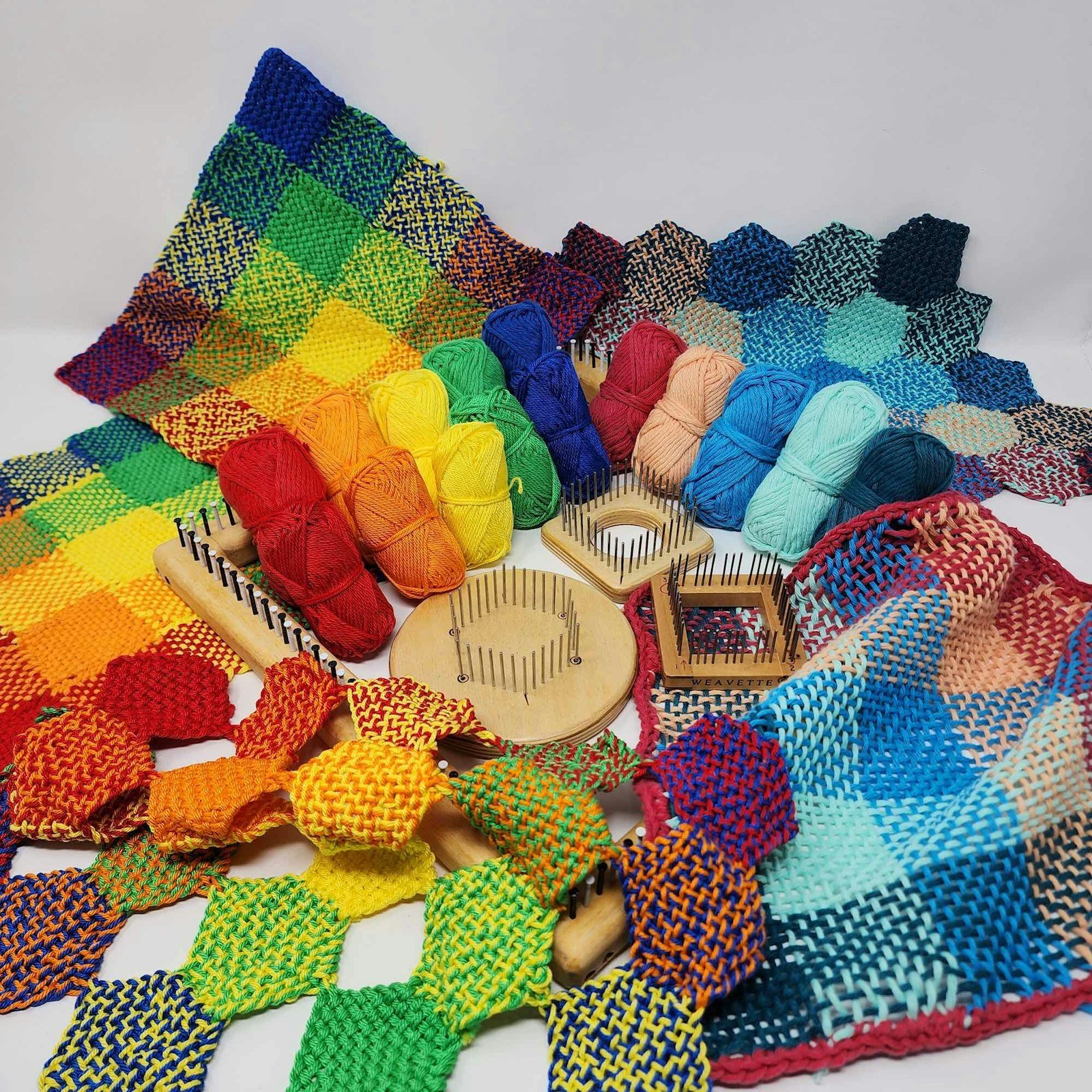Gamps are an incredibly useful tool for weavers. By seeing how colors interact in a gamp, weavers can better plan on how to use color in their weaving. While gamps are easy to weave on the rigid-heddle loom, weaving them on pin looms—especially continuous strand–style pin looms—can pose problems. In her article in the Summer 2025 issue of Easy Weaving with Little Looms, Gabi van Tassell explains her methods for weaving gamps on pin looms, and she had so much good information we couldn't print it all! We didn't want to completely lose her incredible tips and advice, so we've got her full article here for All Access subscribers. (Not an All Access subscriber? Learn about out subscription tiers here.) The full article includes more information about pin-loom gamps, how to weave them, and how to use them. —Christina
I can’t think of a better way to explore how colors blend in handwovens than by weaving a color gamp. In a traditional color gamp, color stripes run across the warp and weft, creating a grid in which the squares show all possible combinations of those colors. Gamps help weavers study color and pattern interactions and then choose colors for their projects. Gamps are also simply a pleasure to look at.
While multi-shaft and rigid-heddle weavers often know about color gamps, the topic is relatively new to pin-loom weavers. Why? First, pin looms generally create much smaller pieces of fabric that don’t allow for gamp-style color blending. Second, pin-loom weaving methods, specifically the continuous-weave method, typically don’t follow the warp-first-then-weave-your-weft approach that is the foundation for larger-loom gamp weaving.
However, pin-loom gamps are both possible and useful. Through sampling, I’ve learned that the goal is not to copy what can be done on other looms but to explore pin-loom–specific options and opportunities.
GAMP PROPERTIES
What does a color gamp look like?
SIZE: Gamps come in all sizes. Each color sample in a gamp should be large enough to show its color interactions—I suggest at least 2 inches wide and high.
COLOR COMBINATIONS: Gamps for a general color study are commonly woven using primary and secondary colors, but you can also weave gamps to explore custom color combinations. These colors could be bright and contrasting or pastel and analogous.

